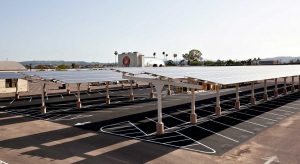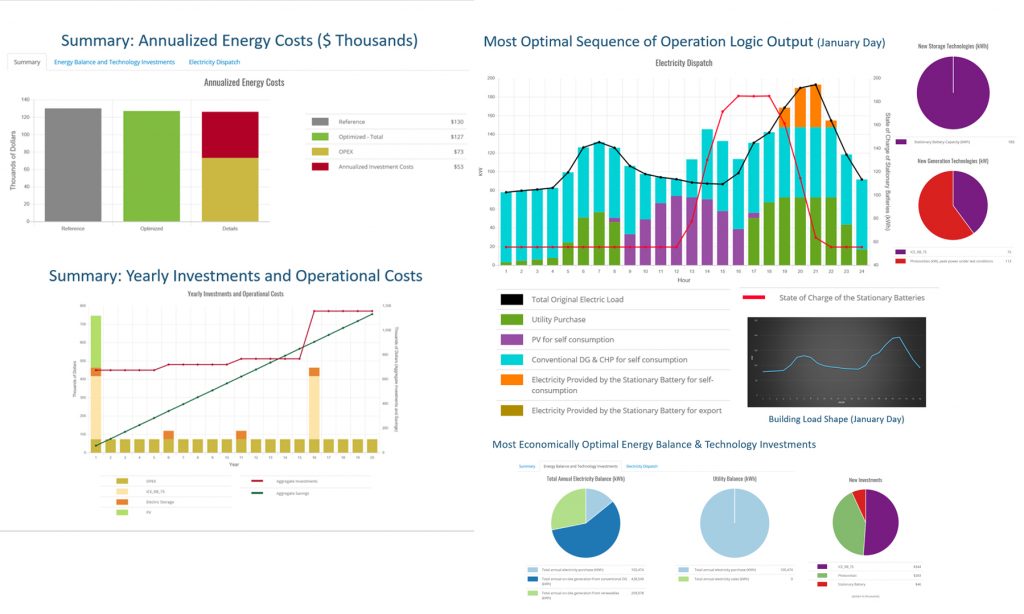Southern Research is leading a team developing and implementing a hybrid energy storage system in a project funded by a Department of Defense (DoD) program that identifies innovative, cost-effective technologies and methods.
Southern Research’s Energy and Environment division, in collaboration with Arizona State University (ASU) and Bankable Energy | XENDEE will develop a microgrid energy storage modeling and design platform with integrated analytics and controls capability.
The primary objective of the project is to demonstrate the value of integrating multiple storage technologies and advanced controls to provide defense-ready microgrids that cost-effectively improve energy security and resilience performance compared to small-scale power delivery systems without storage.

The project is being funded by DoD’s Environmental Security Technology Certification Program (ESTCP), which demonstrates and validates environmental technologies. Its goal is to promote the transfer of innovative technologies that have established proof of concept to field or production use.
“The overall potential economic advantages of an optimized hybrid energy storage system revolve about reduced costs, improved payback potential, better system efficiency, enhanced reliability, and longer equipment lifetimes,” said Bill Chatterton, program manager for energy technology demonstrations at Southern Research.
UNLOCKING THE MARKET
The platform being developed by Southern Research and its partners will enable custom system design and control of a fully integrated, optimized hybrid energy storage system, or HESS. It will use a modular energy storage approach that’s economical and provides system flexibility and improved critical load coverage probability.
XENDEE’s modeling and design approach enables a reduction in microgrid design time of up to 90 percent. “When our team created the XENDEE platform, it understood the influence it would have in unlocking the microgrid market. We’re delighted to partner with Southern Research and ASU’s LEAPS team on the HESS platform,” said Adib Naslé, Founder and CEO of Bankable Energy | XENDEE.
Model predictive control techniques developed by ASU’s Laboratory for Energy and Power Solutions (LEAPS) will reduce system operational costs by as much as 35 percent and extend mission assurance out to 14 days for critical loads.
“Our analytics capability is coupled with hardware-level expertise gained in our Microgrid Test Bed that helps us connect simulations to practice and design microgrids that meet expectations,” said Nathan Johnson, Ph.D., director of LEAPS.
This core HESS approach, combining smaller systems of different technologies, has been demonstrated to provide a reduction in capital expenditures of 10 to 20 percent, with 30 percent lower operating costs. It’s also been shown to essentially double the expected equipment lifetime compared to a traditional energy storage system.
The initial microgrid design model considers four core energy storage system technologies that might be used in specific cases, based on their optimal charging/discharging rate, or C-rate. These technologies are ultra capacitors, Li-ion batteries, flow batteries, and sodium sulfur batteries.
ASU’s model predictive control techniques allow flexible, adaptive and market-aware dispatching of all energy storage and other generation sources on the microgrid. This control software is implemented on an industrial computer that connects with the storage system and the local utility using Schneider Electric’s ClearSCADA platform.
Southern Research expects to complete the design and modeling of the HESS platform this month and to apply for Phase II ESTCP funding to deploy and demonstrate system performance at a DoD installation in 2020.
Example XENDEE Optimization Report
